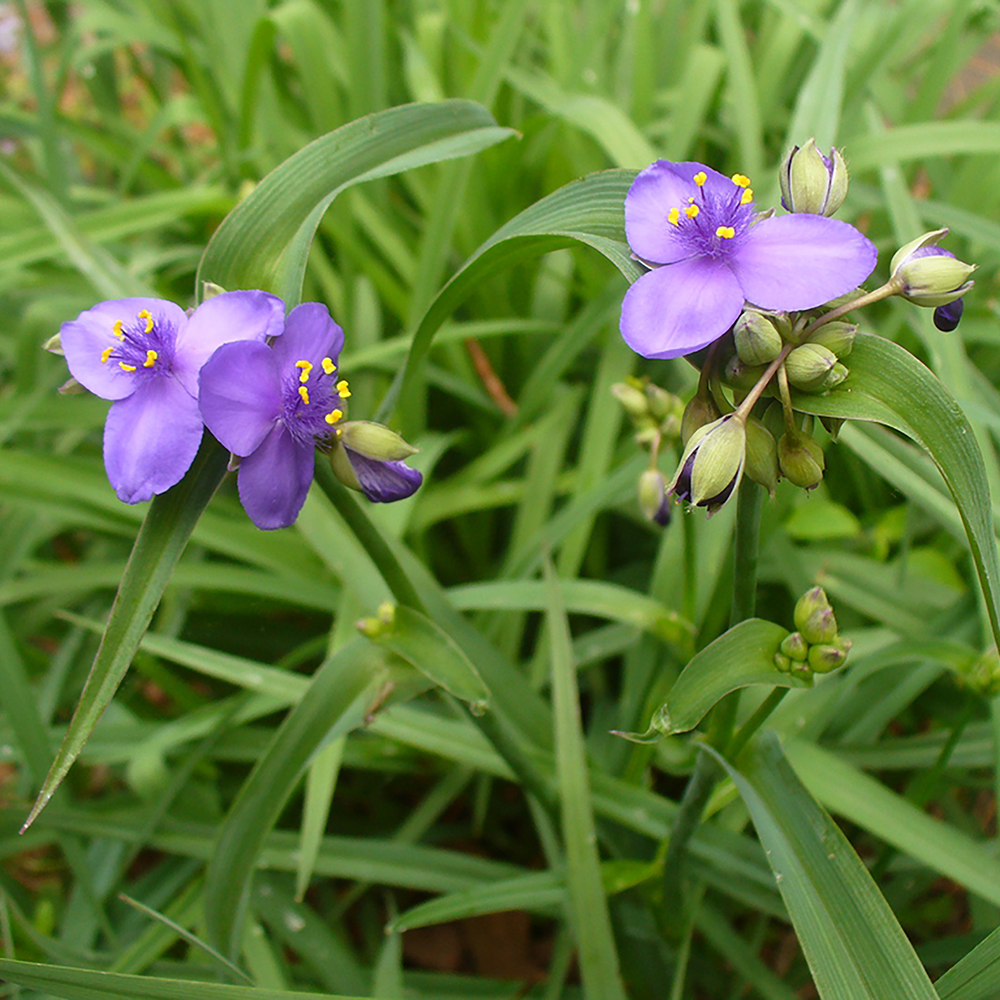
Tradescantia either ohiensis or virginiana. the two species are very similar in appearance. hairy sepals and relative height (ohiensis being the tall, hairy dude) are among the only differentiating traits. what i purchased from a Florida grower claimed to be Virginiana; Ohiensis is more popularly considered the local native species. but the plants seem to be doing fine, having made it through the summer without any problems.
would virginiana and ohiensis cross pollinate and hybridize under certain conditions?
the distinction between species is not always a hard line.
a species diverging into two is a gradual process of adaptation (with a possible factor of geographical isolation). eventually the two divergent varieties are so different that they can no longer combine genetic material to reproduce. before that, varieties can recombine. kind of like dogs and wolves, and hominids, too (neanderthal and homo erectus). this is one reason we see so much variety even within a species. (just look at some of the atrocities we’ve committed re: Canus domesticus, some breeds of which can still interbreed with Canus lupus.)
in the field of Botany, the genus Quercus (oaks) is notorious for this, making it nigh impossible to study just a single oak species. oaks are an evolutionary success story, vastly adaptive due to an expansive reservoir of genetic diversity. multiple species of oak are often found in close proximity and also in varied environments.
i love both the evergreen small-leafed oaks of the south and the oaks of New England with leaves the size of a splayed hand.
extreme specialization indicates that a species has adapted to a highly specific environmental niche. and what oaks have acheived as a genus is the opposite, but has occured by the same rudimentary responses of life to environment.
the niche approach has always seemed precarious to me, although i have seen it yield great success for many because of its focus and persistance. specialization and generalization unfold in symbiotic harmony, both necessary in a living system, and something similar can occur in human lives sharing the same society. the need for intense specialization seems directly proportional to technological evolution, And we need generally/flexibly capable individuals to sustain our communities.
like most analogies, this one falls apart at some point.
and like most categorizations, surely it’s more of a spectrum than a divide.
but the patterns we perceive in biology seem to resonate in us.
back to the spiderwort
both of these species of Spiderwort are edible – every part of the plant, including the roots. when i couldn’t find any growing nearby, i bought some to add to the garden. it’s a long-lived perennial plant that’s native and that you can eat. that checks all the boxes.
have i tried it?
no, not yet. not beyond nibbling on a raw leaf, which tasted like a leaf.
the reason i haven’t tried it more is that i purchased small starter plants. i placed them in different regions of my yard to see how they would respond to different plant companions and to differing times and levels of light and shade.
i won’t munch extensively on a plant until it becomes observable stable and prolific, but i look forward to reporting future culinary adventures.
PSA: the genus Tradescantia contains nearly 100 species of plants, some of which are poisonous. this genus also includes the plants commonly referred to as Wandering Jew, which you should Def Not Eat.
additionally, the common name Spiderwort can refer to plants in the related genus Commelina, belonging to which are some locally growing dayflowers right on the cusp of edibility (ie. species diffusa, erecta) .
don’t just accept the fact that i am still alive as proof!
Always make sure your pant ID is 100% positive before munching down on a foraged plant you think is edible.


